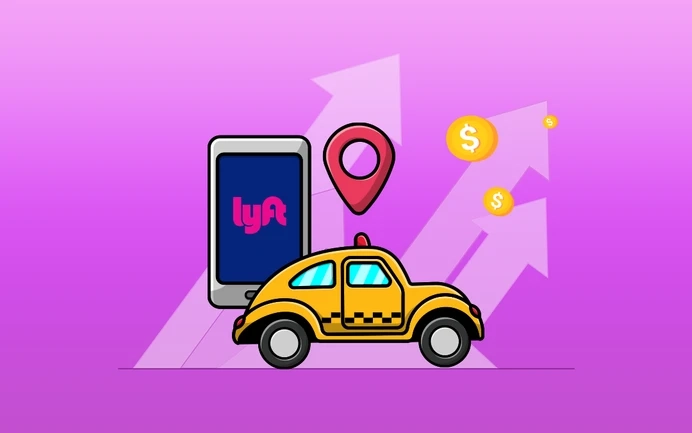So, you're all set to dive into the exciting world of creating a ride-sharing app like Lyft? Awesome! Without so much introduction let’s directly move the blog.
Hope! You have already researched the decision to make an app like lyft. As we know Lyft is one of the major ride sharing apps in the industry.
The success of the lyft app can be attributed to the several factors that contributed to its growth & popularity. Here are few,
Focus on User ExperienceInnovation and DifferentiationEmphasis on SafetyStrategic Partnerships and ExpansionCompetitive Pricing and PromotionsAdaptability and Market ResponsivenessHow does Lyft make money?
Ride Fees:Lyft earns a significant portion of the ride fees charged to passengers for each ride they take. This fare is calculated based on the distance, time, demand and the type of the ride. (Standard, shared, premium)
Commission from drivers:Lyft takes a commission from the drivers. It typically ranges from 20% to 25% of the total fare based on the region and other factors.
Surge pricing:During the peak time (when more taxis are needed), Lyft implements surge pricing, where fares increase to encourage more drivers to be available.
Subscription Programs:Lyft offers subscription-based programs such as Lyft Pink or Lyft Pass, where users pay a monthly or upfront fee in exchange for discounts, ride credits, or other benefits. These subscription models provide a steady stream of income.
Partnerships and Promotions:Lyft partners with businesses, organizations, and brands for promotional campaigns, exclusive discounts, or special deals.
Steps to create an app like Lyft
Research and Choose a Lyft Clone:First things first, research and select a reliable Lyft clone that suits your needs. Look for a clone that offers comprehensive features similar to Lyft and fits your vision for the app. Ensure it provides customization options and aligns with your business goals.
Understand the Clone's Tech Stack:Once you've picked your clone, get familiar with its tech setup. Dive into the clone's documentation or consult with the provider to understand the programming languages, frameworks, and databases used. This insight will help you understand how to work within the clone's tech environment.
Customize and Branding:Time to put your stamp on it! Customize the Lyft clone to match your branding and specific requirements. This could mean tweaking the UI/UX elements, adding your logo, adjusting color schemes, and tailoring features to resonate with your target audience.
Integrate Additional Features (If Needed):Consider the unique features you want to add beyond the core functionality of the Lyft clone. Whether it's a specific payment gateway, a unique user verification system, or extra safety features, integrate them seamlessly into the clone to make your app stand out.
Test Thoroughly:Before going live, it's crucial to test your app rigorously. Run various tests to ensure all features work smoothly, check for any bugs or glitches, and verify the app's performance across different devices and scenarios. You want a polished, flawless app before launch!
Deploy and Launch:Now it's time for the big moment—launch your app! Deploy it on the chosen app stores (like Apple App Store and Google Play Store) or through other distribution channels. Spread the word about your new ride-sharing app and get ready for users to start hopping on board.
Gather User Feedback and Iterate:Once your app is out there, listen to your users! Collect feedback, reviews, and suggestions. Use this valuable information to make continuous improvements. The journey doesn't end here—it's all about evolving and enhancing your app based on user input.
Monitor, Maintain, and Scale:Keep an eye on your app's performance, maintain it regularly with updates and security patches, and be prepared to scale as your user base grows. This ensures your app remains competitive and user-friendly in the ever-evolving tech landscape.
Remember, this isn't just the end—it's the beginning! Your app is out there, ready to connect passengers with rides and bring convenience and efficiency to countless journeys. But the journey of app development doesn't stop here; it's a continuous ride of evolution and improvement.
It's not just about launching an app; it's about building a community of users who rely on your service and trust your brand. So, keep learning, growing, and innovating.
Happy building!



